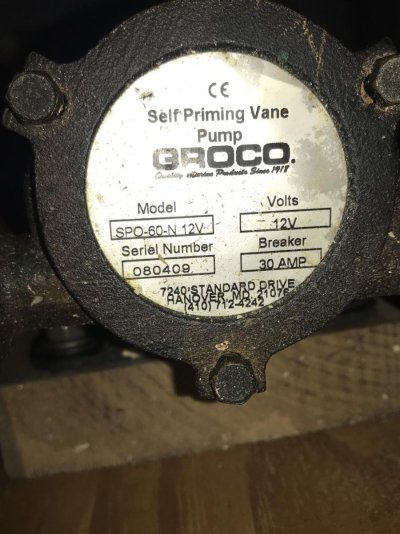Just as an FYI, but when I designed Delfin's venting, I provided for a single 2" vent pipe that all tanks are connected to that goes up the dry stack raceway to above the pilot house where it terminates in an "upside down U" so rain water can't get into it. I do have shut off valves for each tank vent, but never close them. In 11 years of active use, I've never seen any water in any tank, ever, so I guess it works. My point is, I'm not sure closing tank vents needs to be something to remember to do and undo.
Sounds like a great tank venting system you have Delfin and I was originally going to do something similar by plumbing all the fuel tank vents into one and then having all them vent into the Day Tank which would then have a large vent through which all these tanks got their air in/out.
However with six tanks it was going to require quite a bit of plumbing to take all six vents back to the day tank so we came up with the current design where there are two vent boxes built into the vertical aluminium coaming on both sides of the Pilot House along the side decks, which puts them right above the tanks and thus relatively short runs from each tank vent to these two boxes.
I've also designed these vent boxes to have a catch area at the bottom, a bit like a Dorade box and that drains back to a fuel tank below so that if there was ever any overflow up through one of the vents, it would just self drain back into the tank. The hinged door on this Vent Box will have slots and demister grill material on the inside to reduce the humidity of the air coming into the tanks and keep sea water out if some green water ever got up there. And my idea for closing off these vents when leaving the boat sit for extended times is to have a removable plate that fits over the inside of this vent grill and seals off the vents from the outside air.
Just below and beside each of these vent boxes are two similar Fill Boxes built along similar lines with the six fill hoses from each tank going up the sides of the hull into these Fill Boxes. Both the Fill and Vent boxes have lockable hinged doors on them and the Fill Box door will be solid and sealed to be watertight.
This arrangement should make for easy access with big fuel bunkering hoses when filling, keeps the vents close by so you can hear the tanks filling and when they are getting near the top. This along with the fuel tank level meters reading out on my phone should prevent any spills or over filling. Similar to the Vent Boxes these Fill Boxes also have an overfill "sump" to them to catch and contain the inevitable spills and drain this back into the fuel tank.
This arrangement keeps our fuel fills and vents mostly out of sight and well secured from unwanted access from both water and strangers. My other design goal was to keep our decks the way I like them, CLEAR! and should make filling up relatively easy and safe other than the sharp pains emanating from my wallet!

As for the vent shut offs I share your thoughts that these are probably overkill, like most aspects of our boat design, and that there would not likely be very much water that actually makes it way into the fuel tanks from the vented air flow. Like you, I did not have any vent shut offs in my previous boat and opening the tanks after 10+ years of heavy use there was no water in the tanks at all.
However I am very pleased with the overall Vent/Fill arrangement we have come up for all its other benefits and treat the vent shut offs as a bonus.

